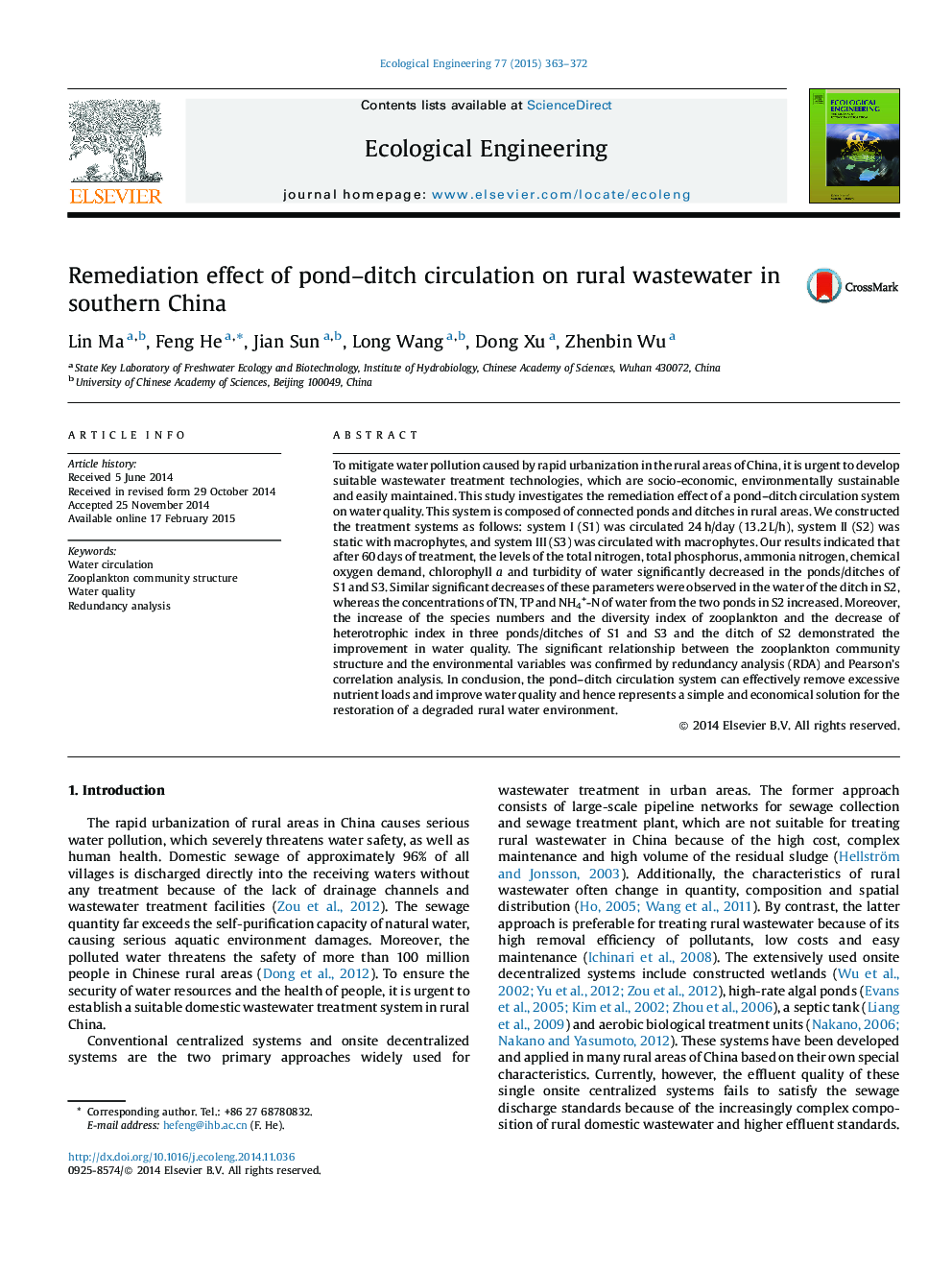| Article ID | Journal | Published Year | Pages | File Type |
|---|---|---|---|---|
| 4389281 | Ecological Engineering | 2015 | 10 Pages |
To mitigate water pollution caused by rapid urbanization in the rural areas of China, it is urgent to develop suitable wastewater treatment technologies, which are socio-economic, environmentally sustainable and easily maintained. This study investigates the remediation effect of a pond–ditch circulation system on water quality. This system is composed of connected ponds and ditches in rural areas. We constructed the treatment systems as follows: system I (S1) was circulated 24 h/day (13.2 L/h), system II (S2) was static with macrophytes, and system III (S3) was circulated with macrophytes. Our results indicated that after 60 days of treatment, the levels of the total nitrogen, total phosphorus, ammonia nitrogen, chemical oxygen demand, chlorophyll a and turbidity of water significantly decreased in the ponds/ditches of S1 and S3. Similar significant decreases of these parameters were observed in the water of the ditch in S2, whereas the concentrations of TN, TP and NH4+-N of water from the two ponds in S2 increased. Moreover, the increase of the species numbers and the diversity index of zooplankton and the decrease of heterotrophic index in three ponds/ditches of S1 and S3 and the ditch of S2 demonstrated the improvement in water quality. The significant relationship between the zooplankton community structure and the environmental variables was confirmed by redundancy analysis (RDA) and Pearson’s correlation analysis. In conclusion, the pond–ditch circulation system can effectively remove excessive nutrient loads and improve water quality and hence represents a simple and economical solution for the restoration of a degraded rural water environment.
